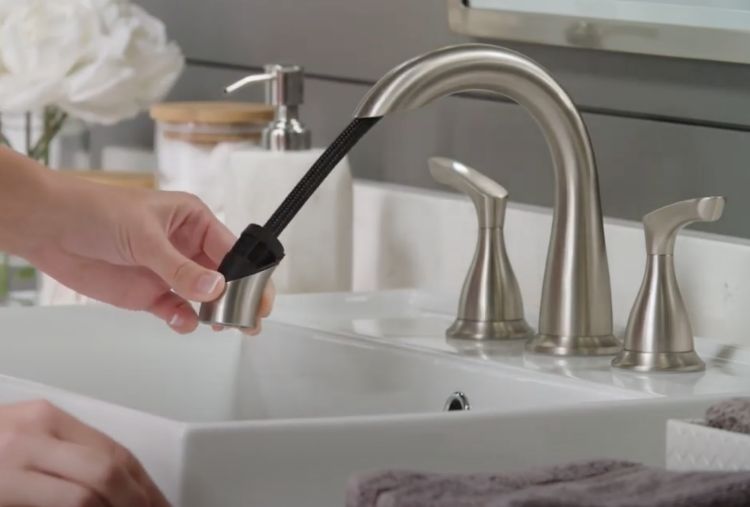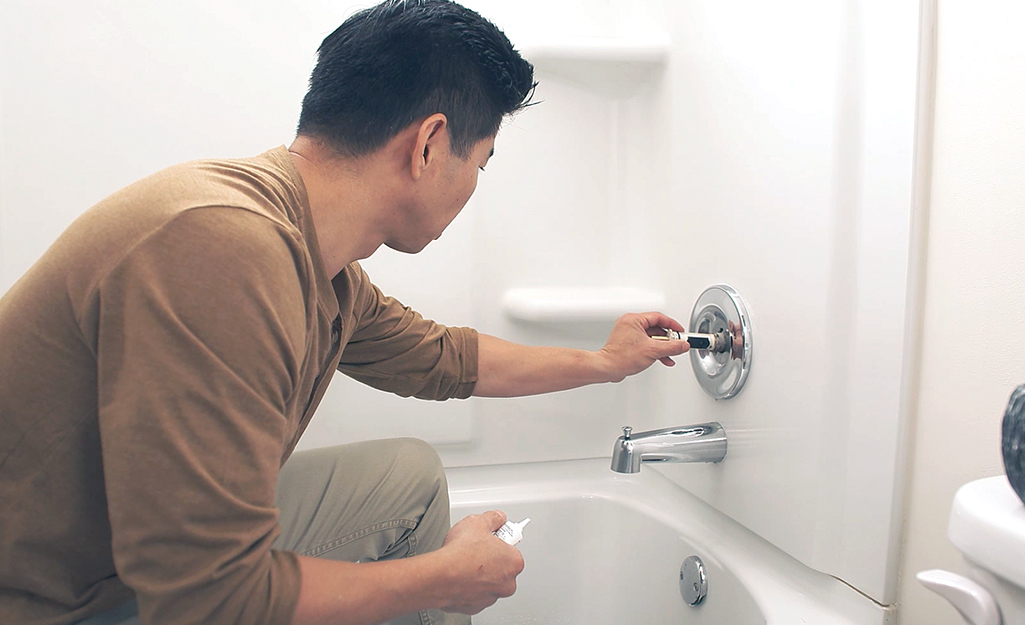Understanding the Relevance of Resolving a Dripping Faucet
Understanding the Relevance of Resolving a Dripping Faucet
Blog Article
Almost everyone maintains their private rationale involving Should I Repair or Replace a Leaky Faucet?.

Trickling faucets may seem like a minor trouble, yet their impact goes beyond just the nuisance of the audio. From wasting water to incurring unneeded monetary costs and health threats, overlooking a dripping tap can bring about numerous consequences. In this article, we'll delve into why it's crucial to resolve this usual family concern immediately and successfully.
Waste of Water
Environmental Impact
Leaking taps add considerably to water wastage. According to the Epa (EPA), a single tap leaking at one drip per second can throw away more than 3,000 gallons of water each year. This not only stress water sources however additionally affects environments and wildlife depending on them.
Financial Costs
Enhanced Water Costs
Beyond the environmental effect, trickling taps can blow up water bills considerably. The built up wastefulness with time converts right into greater energy costs, which can have been prevented with timely fixings.
Prospective Property Damage
Furthermore, extended leaking can lead to damage to fixtures and surfaces surrounding the tap. Water buildup can create staining, corrosion, and even architectural concerns if left unattended, resulting in additional repair prices.
Wellness Issues
Mold and Mold Growth
The constant visibility of wetness from a dripping faucet develops an excellent atmosphere for mold and mildew and mildew development. These fungi not only endanger indoor air high quality but likewise position wellness risks, especially for people with respiratory problems or allergies.
Waterborne Illness
Stationary water in trickling faucets can end up being a breeding place for bacteria and other virus, enhancing the threat of waterborne conditions. Contaminants such as Legionella microorganisms flourish in stagnant water, potentially causing significant health problems when consumed or breathed in.
Do it yourself vs. Specialist Repair service
Pros and Cons of Do It Yourself Repair
While some might try to deal with a leaking tap themselves, DIY repairs include their own set of difficulties. Without correct knowledge and devices, DIY attempts can exacerbate the problem or bring about insufficient repair work, extending the trouble.
Advantages of Employing an Expert Plumber
Hiring an expert plumber ensures that the underlying reason for the dripping tap is dealt with effectively. Plumbings possess the competence and equipment to detect and repair faucet issues efficiently, saving time and minimizing the danger of additional damages.
Step-by-Step Overview to Repairing a Dripping Faucet
Tools Required
Prior to trying to repair a dripping faucet, collect the essential devices, including an adjustable wrench, screwdrivers, substitute parts (such as washers or cartridges), and plumber's tape.
Usual Tap Issues and Their Solutions
Recognize the sort of tap and the particular concern triggering the drip. Typical problems consist of worn-out washing machines, rusty shutoff seats, or defective O-rings. Describe maker guidelines or on-line tutorials for detailed advice on repair work.
Preventive Measures
Routine Upkeep Tips
To stop trickling faucets, carry out regular upkeep such as cleaning aerators, evaluating for leaks, and changing worn-out components promptly. In addition, take into consideration setting up water-saving devices or updating to a lot more reliable components.
Relevance of Prompt Repair Works
Resolving trickling taps as soon as they're noticed protects against additional water waste and possible damage, eventually saving both water and money over time.
Effect On Property Worth
Understanding of Well-Maintained Residential Or Commercial Property
Preserving a building in good condition, consisting of attending to upkeep problems like dripping faucets, enhances its viewed worth and value among possible customers or tenants.
Influence on Resale Value
Residences with properly maintained plumbing components, including faucets, command greater resale worths in the real estate market. Attending to trickling taps can add to a favorable perception during residential or commercial property examinations and settlements.
Environmental Obligation
Individual Payment to Preservation
Taking responsibility for taking care of leaking taps aligns with more comprehensive efforts toward water conservation and ecological sustainability. Every individual's actions jointly make a substantial impact on protecting valuable sources.
Lasting Living Practices
By prioritizing prompt repairs and taking on water-saving behaviors, people contribute to lasting living practices that benefit both present and future generations.
Final thought
Resolving a leaking tap goes beyond plain benefit; it's a crucial action towards saving water, decreasing monetary costs, and securing health and property. Whether with do it yourself repair services or specialist assistance, acting to fix leaking taps is a small yet impactful means to advertise accountable stewardship of resources and add to a much healthier, extra lasting future.
How to Fix a Dripping or Leaky Faucet
A leaking faucet is one of the most common problems that homeowners encounter, but it being commonplace doesn’t make it any less annoying. The constant drip drip drip of a leaking bathtub faucet, showerhead, or sink tap can disturb your home’s serenity. Left neglected, a dripping faucet can also result in higher water bills and discoloration or mold growth in your sink or plumbing fixtures.
Fortunately, you don’t have to be a trained plumber to know how to stop a dripping faucet. With some basic tools, replacement parts, and a little patience, leaky faucet repair is a breeze. In this article, we’ll explain what causes dripping faucets and how you can fix them.
What Causes a Leaking Faucet?
Kitchen and bathroom faucets come in all manner of designs, but most involve some combination of valves, O-rings, seals, and washers. The O-ring is usually the weakest link, but any one of these pieces can wear down over time. Heat, moisture, temperature fluctuations, minerals, mold, and movement can contribute to warping and corrosion, breaking the watertight seal. This just comes with the territory of being a homeowner. Everything is always subject to wear and tear, and some component parts of your appliances and fixtures need to be replaced on occasion. At least replacement O-rings are cheap!
More rarely, dripping faucets can be a symptom of excessively high water pressure. Were this the case in your home, you would probably notice that the leak is not isolated to one faucet. Water pressure issues are harder to resolve on your own. We recommend contacting a professional plumber if you suspect your water pressure is too high.
How to Fix a Dripping Faucet
Pipe wrench or monkey wrench Allen wrench set Screwdrivers Old towel or rag Shut off the water.
Before you do anything, you need to turn off the water to keep from drenching your kitchen or bathroom. You should find a valve under the sink and against the wall. Once you’ve turned this valve, try turning the faucet on to confirm that the water source has been cut off.
If you can’t locate your local valve for the faucet you’re working on, you can always shut off the water to the house at the main valve. Of course, this will prohibit anyone from using the sinks, showers, or toilets while you’re working on the faucet that’s giving you trouble.
Plug or block the drain.
You’ll be disassembling the faucet and removing some small bits of hardware. Plug the drain with a stopper or rag to avoid the possibility of a small screw falling into your P-trap.
Take apart the faucet assembly.
There are several varieties of kitchen and bathroom faucets, each with its own manner of assembly. For detailed instructions on how to disassemble your faucet, you can refer to the fixture’s manual or contact the manufacturer. If you know whether you have a ball, disc, cartridge, or compression faucet, you can find detailed schematics online.
In general, you need to begin by removing the faucet handles. You might notice a small screw that you’ll need to remove with a screwdriver or Allen wrench. If you don’t see any visible securing hardware, it’s likely hidden under a decorative cap that can be unscrewed or popped off with flathead screwdriver.
Remove each piece methodically, consulting a schematic when necessary. Take notes or arrange the pieces in such a way to make it easier to correctly reassemble the faucet later.
Remove the cartridge.
Once you’ve removed the handles and securing hardware, you should be able to remove the valve cartridge or stem. Some cartridges will slide right out. Other faucet models will require you to loosen a nut with a pipe wrench before you can remove the valve stem.
Examine the exposed hardware.
With the cartridge or stem removed, inspect the component parts. Check the rubber O-rings for wear and tear. Also examine the seat washer for corrosion or other damage. These pieces are usually the responsible parties for a dripping faucet, but it’s worth inspecting the other component parts while you have the faucet disassembled.
Find replacement parts.
Once you’ve identified which faucet component has failed, find an identical replacement. Your local hardware store should have O-rings, seat washers, and other standard components in stock. If you have a luxury or uncommon faucet, you may have to contact the manufacturer for a replacement part.
It’s a good idea to take your old parts with you to the hardware store so you can compare them with the store’s inventory and be sure you’re purchasing the correct replacement.
Reassemble the faucet.
With your new parts in hand, reconstruct the faucet and handles. Don’t be tempted to overtighten screws or nuts. You might think this could create a better seal, but it can instead damage or bend a delicate part of the assembly and create a new problem for you.
Turn on the water and test the faucet.
The only thing left to do is test your work. Unplug the sink, turn the water back on, and try the faucet. Congratulate yourself on a job well done!
https://www.libertyhomeguard.com/how-to-fix-a-dripping-or-leaky-faucet/

I'm very fascinated with Why Is It Important To Fix Your Leaking Tap/Faucet? and I'm hoping you appreciated our blog post. Those who liked our blog entry kindly make sure you remember to pass it around. Thank you so much for going through it.
Report this page